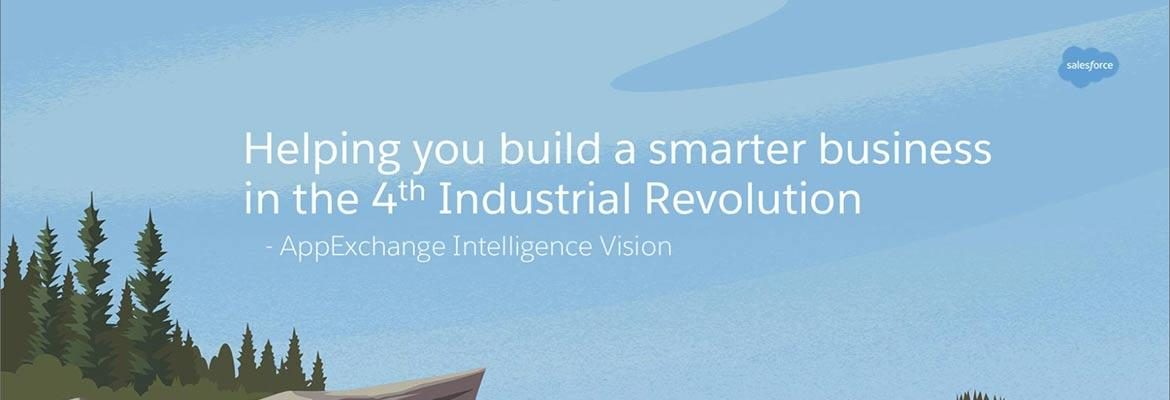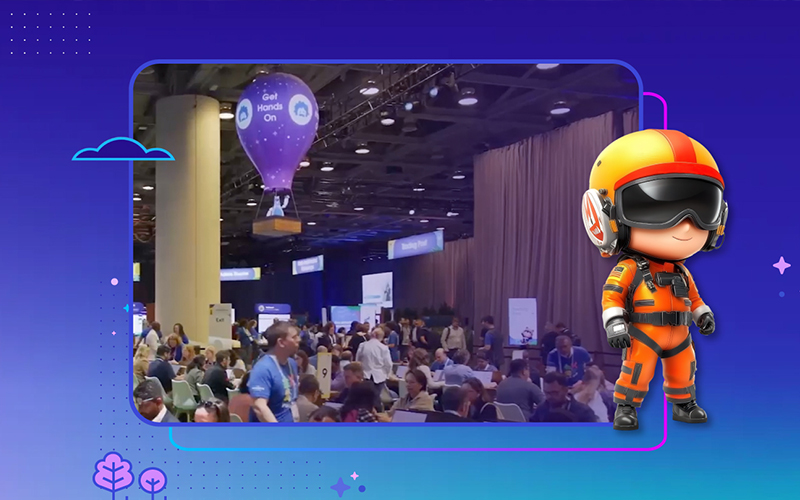
Since the announcement about enhancements to the AppExchange from this year’s Dreamforce (check out our blog here), we’ve been waiting to learn more about how they will look and function. During last week’s Salesforce Partner Power Hour, we had the chance to take a peek at these new enhancements.
Leading the presentation was Bryan Corcoran, Senior Product Manager of AppExchange Intelligence.

The 4th Industrial Revolution and the AppExchange
Bryan started the call discussing the 4th industrial revolution, which was a major focus during Dreamforce. The driving force of the 4th industrial revolution is that we have moved to the revolution of intelligence — which means systems must be smarter and that customers are expecting intelligent features out-of-the-box.
To meet this revolution and provide the intelligent features that customers require, the Partner Analytics dashboard was developed.

With the goals of Understanding User Behavior (answering where did this person come from, what are they looking for, and what did they do once they got there) and Taking Insight-Based Action (making campaigns with the analytics you receive and then comparing that with the results you achieve), we were given a look at how this new dashboard will help partners achieve their goals.

Leveraging the infrastructure Salesforce has available, the new platform will collect the actions of users on the AppExchange with Heroku, transform this data into actionable insight with big objects, and then allow you to visualize the data using the power of Einstein.
A Look into the Future
With a stated goal of “launching as soon as possible in 2019,” Bryan took us on a live demo of the new analytics dashboard.
Your New Metrics
You can quickly switch between multiple AppExchange listings and control the data range in which your data is reported.
As we look at the actual data available in this module, we see that the data is broken down into a funnel starting with tile view (impression) to install (action).
Tile Views – When a user is browsing the AppExchange, how many times your AppExchange listing loads on the page.
Tile Hovers – How many times a user hovered over your AppExchange listing to read more about it. This specifically shows the first time a user has intent for your app, which means something about your listing (the design, the name, etc.) has caught their eye.
I imagine the conversion ratio between Tile Hover and Visitor will be a metric that many will start to focus on to optimize their listing.
Visitors – How many people clicked on your tile and viewed your listing.
Leads – How many users interacted and converted themselves into a lead by demoing, downloading collateral, or interacting with other content on your page.
Installs – The goal metric — how many people installed your app and converted into a customer.
Activity Source Timeline and Customer Engagement Tracking

The new Activity Source Timeline provides a breakdown of the sources that drive customers to your listing. With the three different drop-down menus, you will be able to filter by source, activity, and time range.



The ability to visualize where your visitors are coming from lets you quickly detect traffic spikes/dips and better understand if your campaigns are having the desired impact.

The Customer Engagement module captures the various ways your visitors are engaging with your listing. Activities you can view in this module are: Tile Views, Hovers and Visits; Resource Views; Demos, Test Drives and Saves; Screenshot Views; and Leads, Installs and Get it Now Installs.
Saves are a newly tracked metric, which means a visitor has flagged your listing to return to later. Saves are often indicative that a visitor has to check with a higher up or IT manager and will likely come back to convert to an install.
While it won’t be ready for release, screenshot-depth tracking is currently being developed to allow you to optimize your screenshots and see where drop-offs are happening. Time-on-page and scroll-depth tracking are also on the roadmap to provide greater listing optimization.
Actionable Keyword Tracking
![]()
The final piece of the new partner analytics dashboard is the Top AppExchange Searches Module, which allows you to track not only the keywords that are driving visits but also keywords that are driving installs. The ability to monitor which keywords that convert to installs will help you tailor your listing for conversions and not just views.
What’s on the Roadmap for FY19

After the initial rollout, there are three major enhancements planned for FY19. Campaign attribution will allow users to track which campaigns are driving users to the listing (Google AdWords, Facebook, etc.). Analytics API will give users the ability to plug their data back into their org or other tools for custom analysis. Performance Benchmarking will let users compare their AppExchange listing performance to others in their same industry cohort as well as the general AppExchange.
Are you ready to take full advantage of the AppExchange? CodeScience was the first to receive PDO Master designation from Salesforce, and we’ve helped partners build 220+ products for the AppExchange. Get in touch today!



